The Dunning Letters SuiteApp enables NetSuite users to set up automated dunning processes in NetSuite to help manage the collections of accounts receivable by either triggering an email to the customer automatically or allowing the NetSuite user to send the email manually.
The out of the box dunning emails contain standard NetSuite fields such as transaction number, date, amount, currency, and memo, but they do not contain any customized fields that the user might have added to the transaction invoice record and that the customer might expect to see on the payment reminder email.
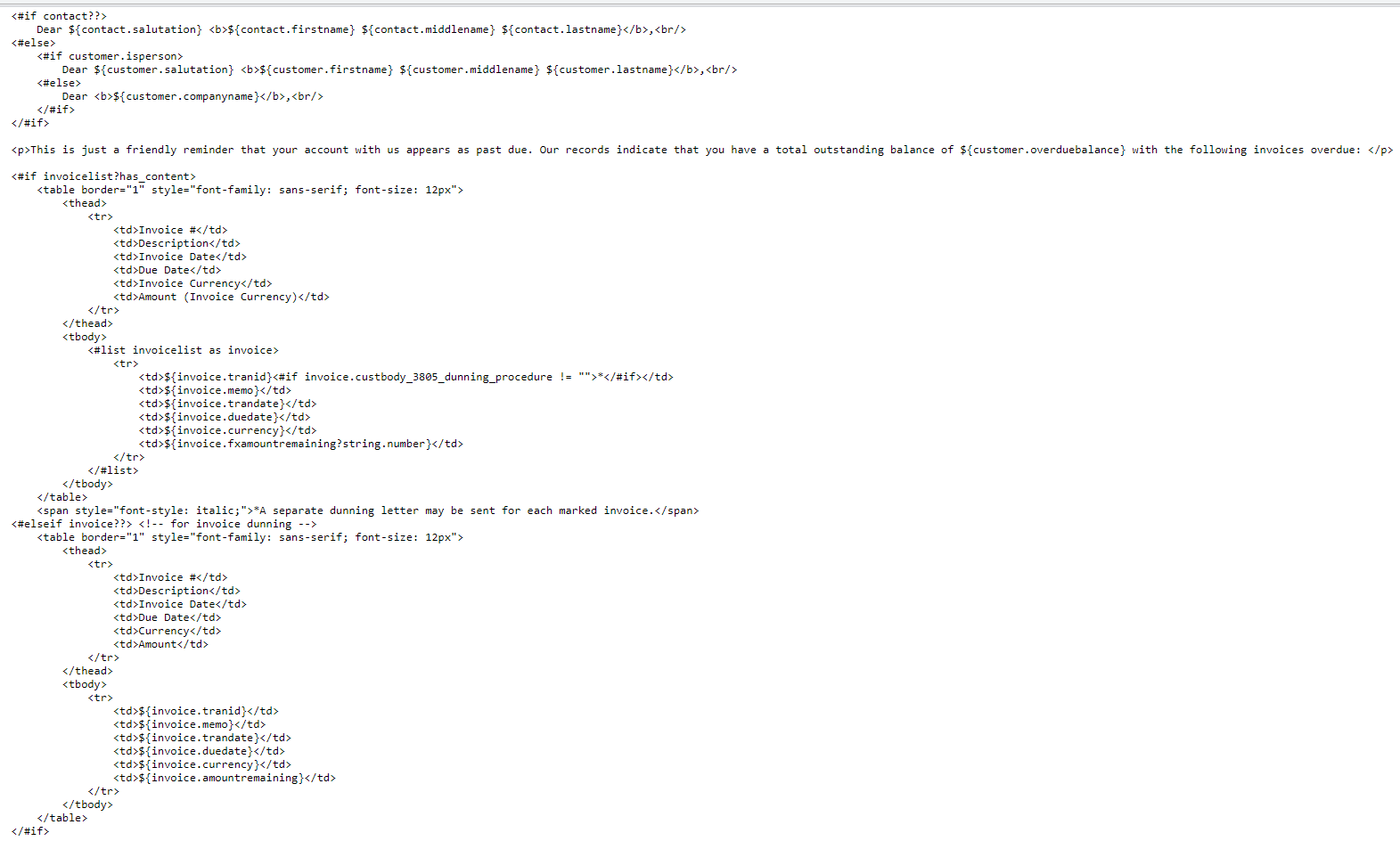
Figure One: The standard out of the box dunning XML email pulls invoices that are overdue and sends them as a list within a table on the email. See Figure 2 for the email table.
 Figure Two: The email table that is printed on the email with the overdue invoices’ information.
Figure Two: The email table that is printed on the email with the overdue invoices’ information.
In order for the emails to also contain customized fields that customer might expect to see on their payment reminders, you will need to add the custom field to the table in the XML of the email template, as well as identify the field as an available Dunning Template Invoice Field.
To add the fields on the email template, simply find the field ID of the custom field. You can obtain this by navigating on the center menu via Customization > Lists, Records, & Fields > and then choosing the correct field type (entity, item, CRM, etc.) based on the custom field.
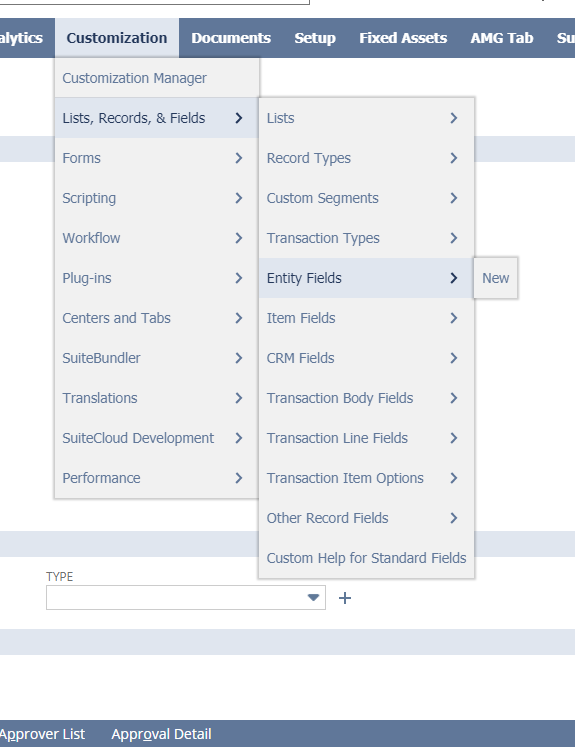
Figure Three: Navigate to the type in order to find the field ID of the custom field you’d like to add the dunning email template.
You can also find the field ID by navigating to the field on a transaction form, selecting the field help, and the field ID is located in the top right-hand corner.
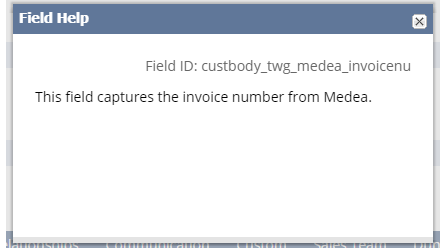
Figure Four: The field ID is also located on the field help popup when you select the field name.
To get the custom field on the dunning email, you’ll want to add a new column to the table on the email template and give it a name. You’ll also want to add the field ID to the table data section so the table knows what data to pull for the dunning email.
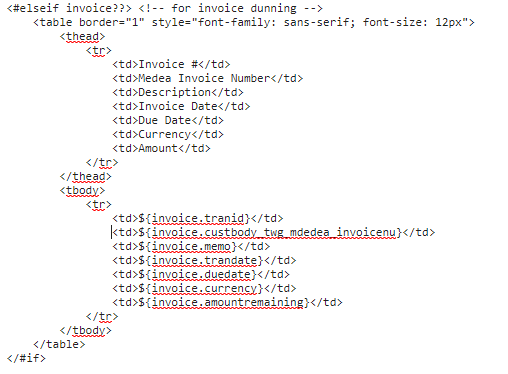
Figure Five: The new column for Medea Invoice Number has been added on row six, and the data row information using the field ID was added on row 17.
On save, the email template will now be able to pull in the Medea Invoice Number when dunning customers. However, you still need to define the field for the Dunning Email Template Fields.

Figure Six: The new table on the dunning emails will look like this. The custom field for Medea Invoice Number will be populated.
Using the center menu, navigate to Setup > Dunning > Dunning Email Template Fields.
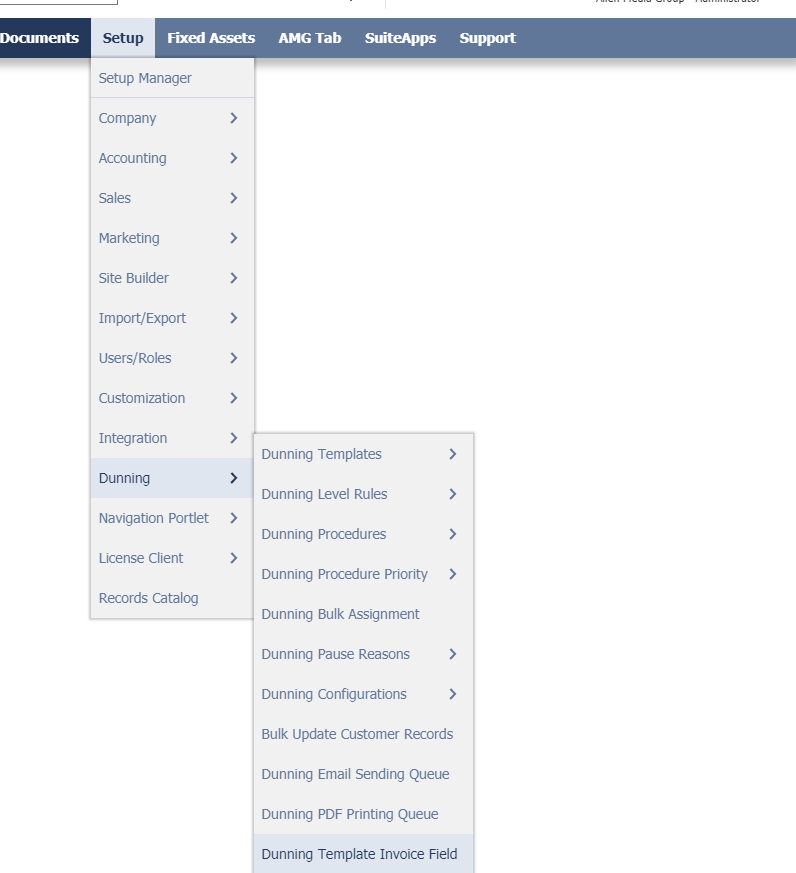
Figure Seven: Navigate to the Dunning Template Invoice Field to add the customer field to the available dunning invoice fields.
On the Email Template Invoice Fields, you will see all of the fields currently available for the dunning emails to use and display on the generated dunning email. In order for the custom field to populate on the email template, you will need to add that invoice field to this list. You will need to do this for every custom field that you add to the email template.
Add the custom field ID to the Invoice Field ID box and then select Add Invoice Field. On select, the page will refresh and if successful, you will receive a confirmation notice that the invoice field has been added to the list. Verify the addition.
When you generate a new dunning email, the custom field will now be populated within the body of the table on the email record.
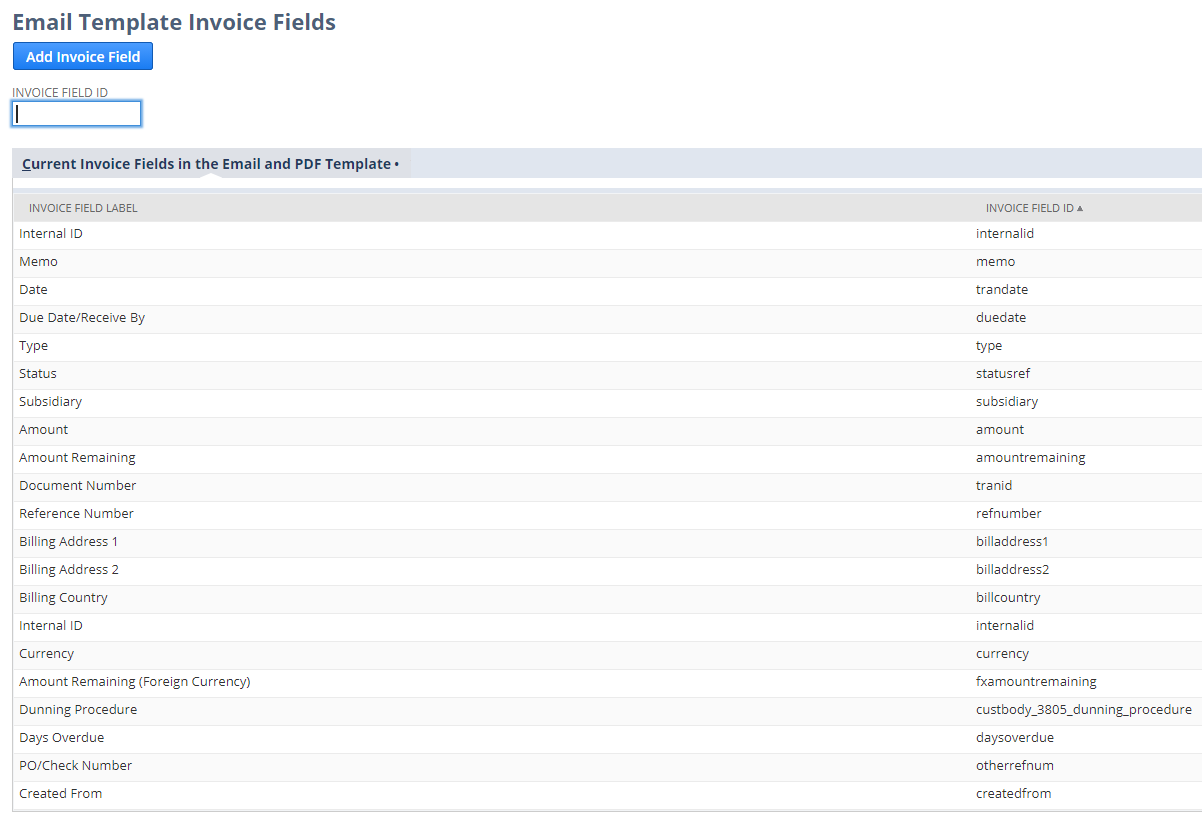
Figure Eight: The Email Template Invoice Fields before adding the custom field via the Invoice Field ID box.
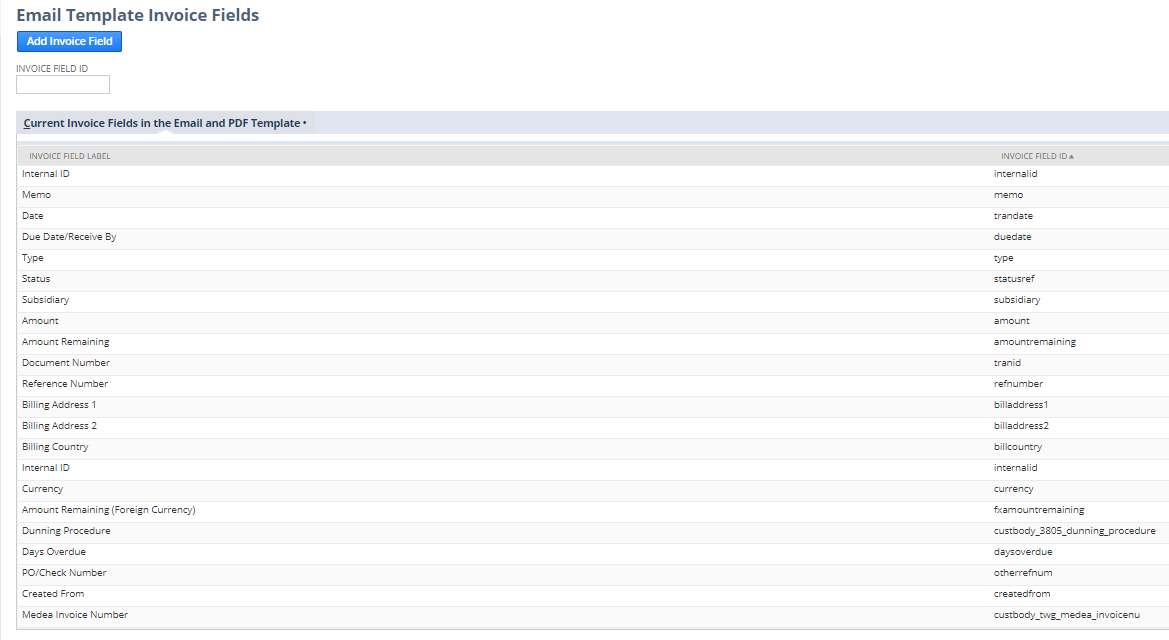
Figure Nine: The Email Template Invoice Fields after adding the custom field via the Invoice Field ID box.
For more information on this topic or others related to NetSuite Implementation or NetSuite Pricing, contact RSM at netsuite@rsmus.com or by phone at 800.274.397.

 RSMUS.com
RSMUS.com